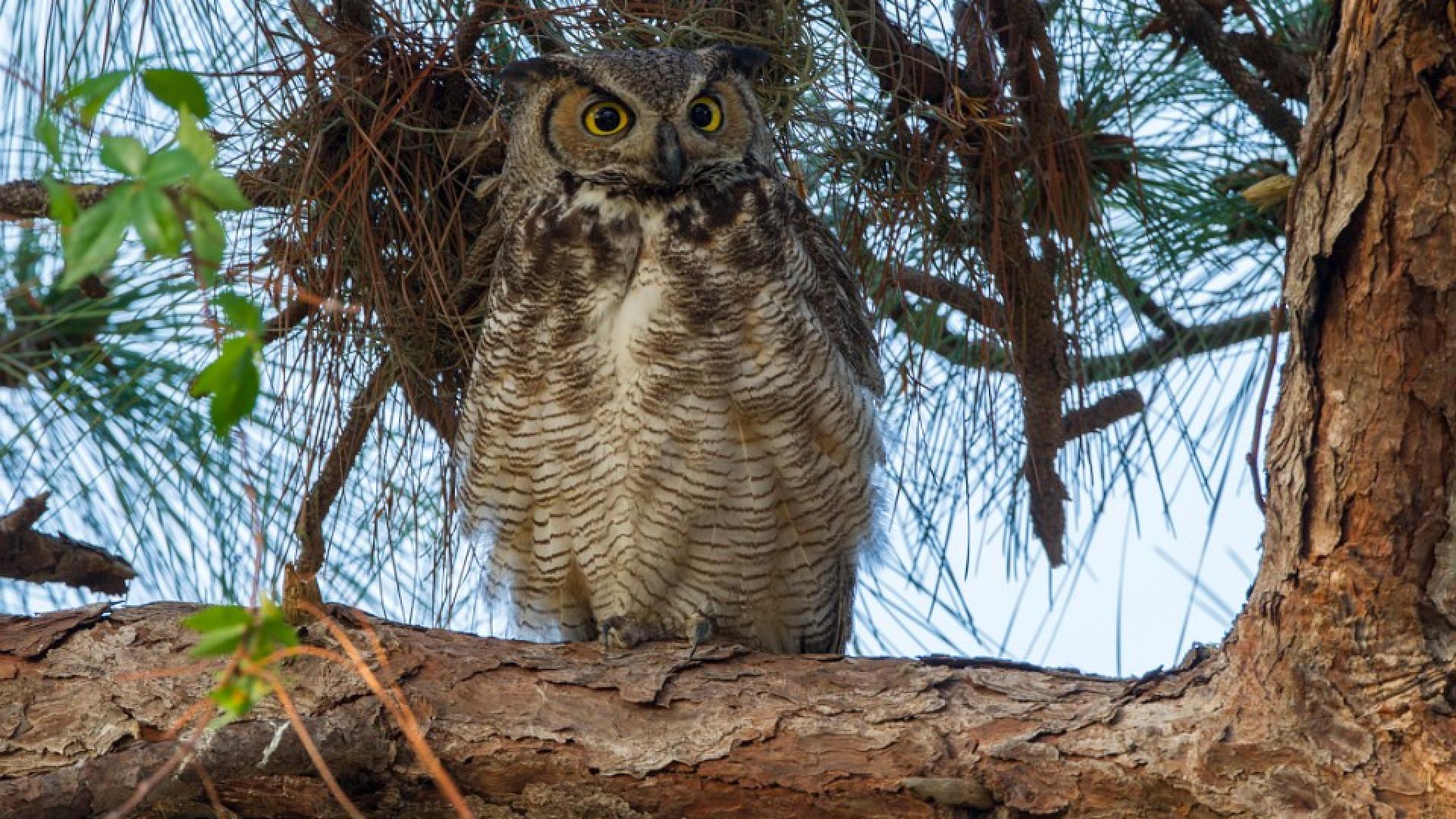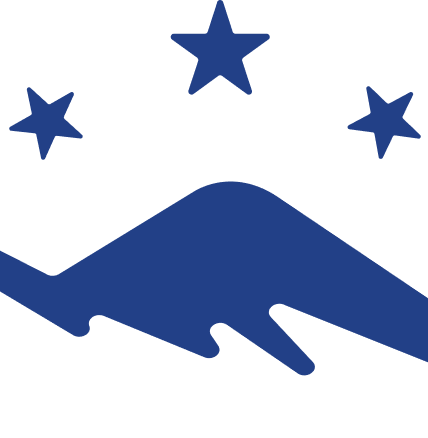Time for a Trip to Chazy
With August in full swing, it was time for me to take a trip to the Chazy Riverlands to check what shorebirds may be migrating through the area along Lake Champlain. I had a bit of a late start, but I like the afternoon and evening at Chazy anyway. I brought my boat since access to Chazy comes by paddling down along the marshes from the Great Chazy River boat launch, but I ended up deciding to walk into the marshes where I have permission from a private landowner. Given my late start, it saved me a little time over paddling. Those looking to explore the area should bring their canoe or kayak and paddle south from the boat launch along a strip of state land composed of marshes and mudflats.
The fields along Lakeshore Road were active as I arrived in the area, and I took some time to bird along the road where I found flocks of Bobolinks, and Red-winged Blackbirds as well as Savannah Sparrows and Song Sparrows. As I entered the marsh a large flock of Ring-billed Gulls also sat on one of the nearby fields, eventually lifting off to spend the night on the water. A Great Blue Heron croaked as it lifted off at my approach through the grasses, but mostly everything else stayed put as I began scanning.
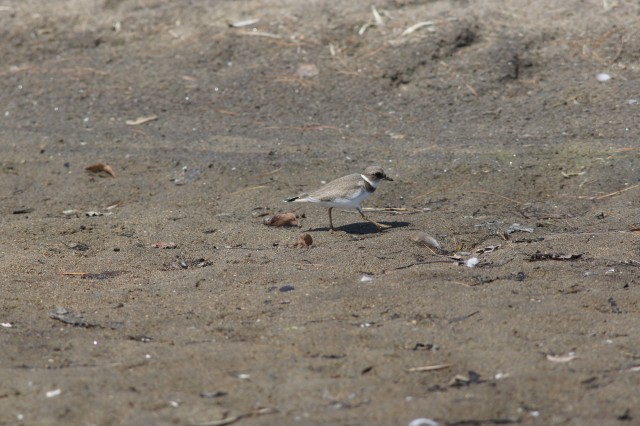
A Diversity of Shorebirds and Other Species
Recent reports from other birders in the area in the past week or so had noted Baird’s Sandpiper and Stilt Sandpiper, and while there were no such uncommon species on this day, there was still a nice collection of shorebirds present on the mudflat I was targeting. I saw several Killdeer, a few each Greater and Lesser Yellowlegs, Semipalmated Sandpipers, Least Sandpipers, a couple Spotted Sandpipers, and a lone Semipalmated Plover. After all, the composition of the species present may change each day during migration. The mix of birds can also change throughout the day so the usual practice for such locations is to wait for a while and see how the birds come and go. Shortly after arriving, all of the Yellowlegs took off and flew south. Soon after I noticed a couple Wilson’s Snipe lurking on the edge of the reeds before coming out into view to probe the mud with their long bills. A few Blue-winged Teal and Mallards dabbled in the shallows and they were soon joined by two Pied-billed Grebes – an adult and a young bird.
A Caspian Tern called raucously overhead, and I watched as better than 400 Barn Swallows came and went above and around me in their search for insects. I also noted a couple Tree Swallows and a lone Bank Swallow in the flock. The numbers of these species will certainly grow soon as they flock up to head south, but on this day the sky was owned by Barn Swallows.
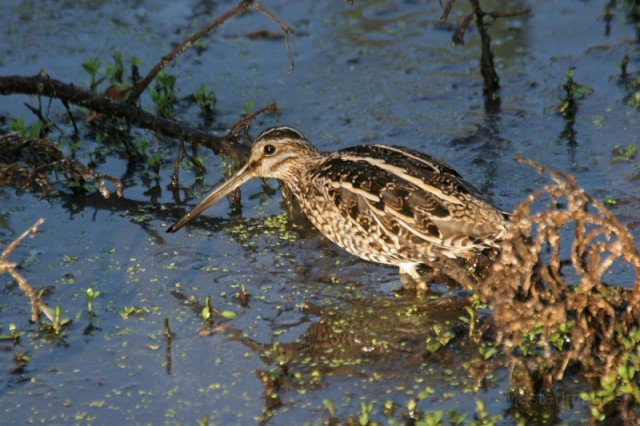
The grasses were also busy with the activity of Song, Swamp, and Savannah Sparrows, and Bobolinks called Bink! as they passed to and fro overhead. Marsh Wrens offered a little bit of song before one began to scold me from the nearby reeds. A Common Gallinule called. The evening in the marsh was beautiful and peaceful as the sky became purple and orange with the setting sun.
Reluctantly I turned to go, but as I did, I noted lines of Mallards and Wood Ducks flying down into the marsh – they had evidently been feeding someplace else all day. I drove north to Point Au Fer where I wanted to check out King’s Bay Wildlife Management Area. I was glad that I did.
The Evening at King’s Bay Wildlife Management Area
I arrived as the glow of the western sky accented the dark shapes of the trees and silhouetted a Great-horned Owl perched on a snag in the middle of the marsh along Point Au Fer Road. It sat for a spell before gliding into the gloom. I parked off the side of the road and walked back along it as Great Blue Herons croaked loudly chasing each other. The flight of one heron spooked a Sora in the grasses and the small rail whinnied in alarm. A young Great-horned began calling from the line of woods on the far side of the marsh – while Great-horneds usually fledge early in the season, this fledgling was still calling to the adults for food and I listened to it as the sound moved from place to place against the dark tree line. While the bird could clearly fly, it still wanted food! Its raspy begging calls incessantly punctuated the growing night.
A second Sora began to call from the marsh as I stood listening and swatting at a growing army of mosquitoes, and I soon put on an additional layer of clothing on my arms to help protect me. A Wilson’s Snipe flew overhead and a few minutes later an American Woodcock did as well.
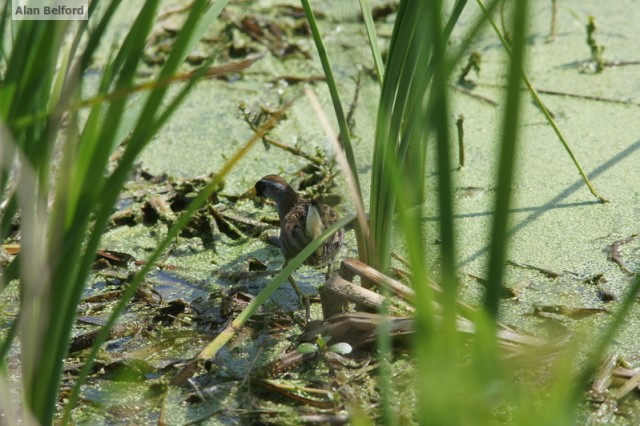
I hooted for Great-horned Owl to see if the young owl would respond and soon noticed an adult bird (perhaps the owl I initially saw) perched nearby in a snag. It flew off, but after I moved my car a short ways down the road to the parking lot for the trail to Catfish Bay, I heard the deep voice of the male Great-horned not too far away declaring his territory. I hooted back and the owl came in to investigate - flying above me and sitting on top of the trees in the darkness. I stood and listened to him in the silence, enjoying the strange intimacy we had in the moment as the stars spread across the black sky above us. He finally moved back towards the trees along the marsh, and I took that as my cue to leave and head home. The marsh and surrounding woods were his and I wasn’t going to dispute that with him.
Late summer and early fall are great times to explore the Champlain Valley. Check out our birding, outdoor recreation, dining, and lodging pages!

